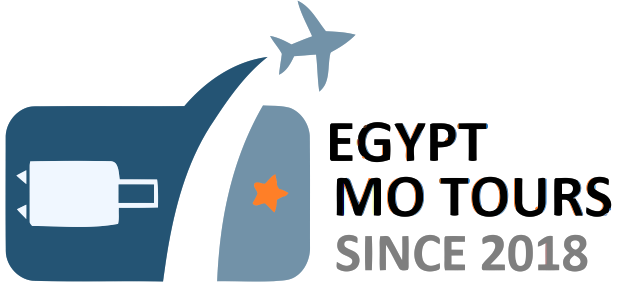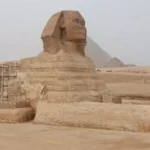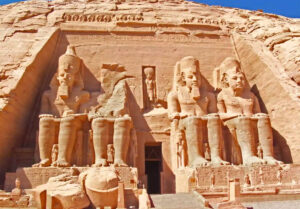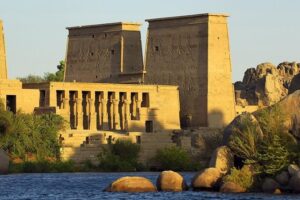Unearthing Tutankhamun: A Pharaoh’s Legacy
King Tutankhamun, also known as Heqaiunushema (Nebheperure), is one of Egypt’s most famous pharaohs. However, his name does not appear in the Abydos kings list. In fact, inscriptions reveal his rule was short. Howard Carter discovered Tutankhamun’s tomb in 1932. Subsequently, this garnered major worldwide media attention. His intact grave contained some of the most beautiful burial items and furniture ever found. Consequently, King Tutankhamun’s funeral mask is one of the most famous ancient artifacts in the world.
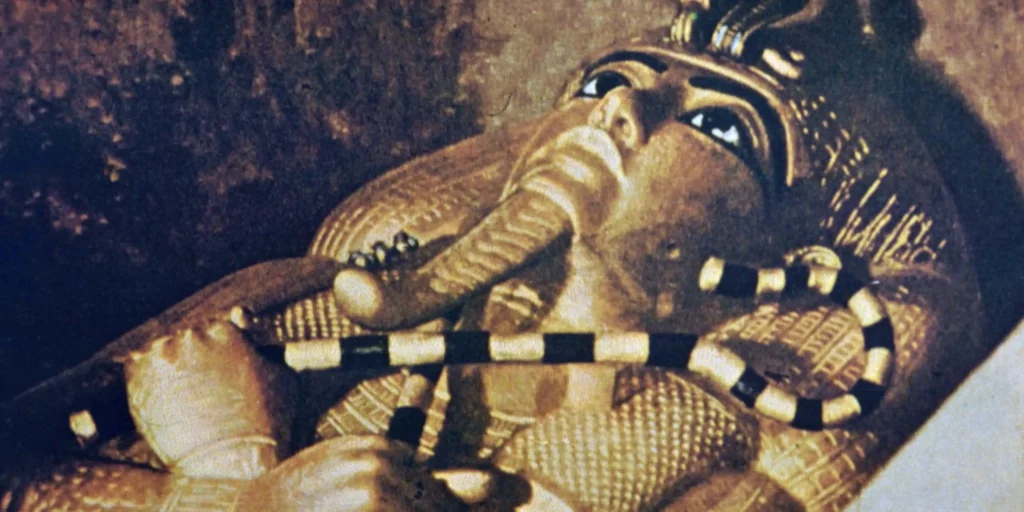
More About King Tutankhamun
Tutankhamun’s name initially meant “the Living image of the Aten.” He later changed his name to Tutankhamun, or Heqaiunushema. This stands for “Living image of Amun who is the ruler of Heliopolis And Upper Egypt.” People spelled the name Amen-tut-ankh. He likely changed his name shortly before he left Akhenaton’s city. He returned to Thebes to reinstate the ancient gods. Nebheperure, meaning “lord of manifestations of Re,” was the king’s throne name. As pharaoh, he was also known as Nibhurrereya. We see this name in the Amarna letters.

King Tutankhamun’s Family Background
King Tutankhamun married Ankhesenpaaten (Ankhesenamun). She was also his half-sister, the daughter of Akhenaten and Nefertiti. The couple appeared very close. Engravings in his tomb depict them together in intimate scenes. Unfortunately, their only two children were stillborn. Two tiny mummies were buried with their father. An inscription refers to him as “the son of the pharaoh.” However, the text does not clarify which king it mentions.
The Reign Of King Tutankhamun
King Tutankhamun ruled from 1334 to 1325 BC. His reign marked the end of the New Kingdom’s Eighteenth Dynasty. He rose to power at a young age. Many believe Ay actually controlled the throne then. Before this pharaoh’s reign, Akhenaton initiated a religious revolution. He rejected the ancient gods and promoted Aten. He abandoned Thebes and established a new city, Akhetaten. This city seemed to have no links with any god but Aten.
In the third year of his reign, King Tutankhamun began restoring the old gods. He lifted bans on temples and reinstated priesthoods. The capital moved back to Thebes. He also built new temples honoring Amun-Ra. The pharaoh and his queen changed their names to honor Amun.
Tutankhamun’s artifacts
Tutankhamun’s tomb held an astounding collection of treasures. These artifacts provide invaluable insights into ancient Egyptian beliefs, daily life, and artistry. Here are some of the most significant items found within King Tut’s tomb, with more details:
The Burial Mask
This iconic golden mask covered Tutankhamun’s mummified face. It weighs over 22 pounds (10 kilograms) of solid gold. Artists masterfully inlaid it with lapis lazuli, quartz, obsidian, and other precious stones. The mask depicts him with a traditional beard and headdress. Hieroglyphs from the Book of the Dead appear on the mask’s back. These offer protection in the afterlife. The mask is perhaps the most recognizable symbol of ancient Egypt.
The Sarcophagus and Coffins
Tutankhamun’s mummy rested within a series of nested coffins. A quartzite and red granite sarcophagus housed these. Craftsmen made the outer two coffins from gilded wood. They inlaid these with glass and semiprecious stones. They intricately decorated each coffin with protective deities and hieroglyphic inscriptions. However, they crafted the innermost coffin from solid gold. It weighs about 243 pounds (110.4 kilograms). These coffins depicted the king as Osiris, the god of the afterlife. The sheer weight and artistry of the gold coffin highlight the immense wealth and skill of the ancient Egyptian craftsmen.
Canopic Jars and Shrine
Ancient Egyptians removed a person’s organs during mummification. Then, they placed these organs in canopic jars. In Tutankhamun’s tomb, an alabaster canopic chest contained four such jars. Specifically, each jar held a specific organ: the liver, lungs, stomach, and intestines. Furthermore, a magnificent golden canopic shrine, standing six and a half feet tall, housed these. The shrine depicted goddesses like Isis, Nephthys, Neith, and Serqet guarding the contents. Their outstretched wings, moreover, offered symbolic protection. This complex arrangement underscored the Egyptians’ meticulous preparation for the afterlife.
Chariots
The tomb contained six golden chariots. These chariots were in various states of disrepair upon discovery. After careful restoration, experts identified them as D-cab chariots, designed to be drawn by two horses. Two of the chariots were lightweight hunting chariots, while four were heavier parade or war chariots. The surfaces of the chariots were adorned with scenes of the king in battle or hunting. The image of a pharaoh driving a chariot symbolized royal power and wealth. Their inclusion suggests Tutankhamun’s intended activities in the afterlife.
Golden Throne
Tutankhamun’s “golden throne” is primarily made of wood, covered in gold. Indeed, it features intricate scenes of the pharaoh and his queen, Ankhesenamun. For instance, the backrest shows a tender scene of the queen anointing the king. This depiction, rare in royal Egyptian art, emphasizes their close relationship. Furthermore, the throne’s legs are carved in the form of lion’s paws. Moreover, the arms are adorned with winged cobras, symbols of protection. Ultimately, it is a stunning example of New Kingdom craftsmanship.
Weapons and Daggers
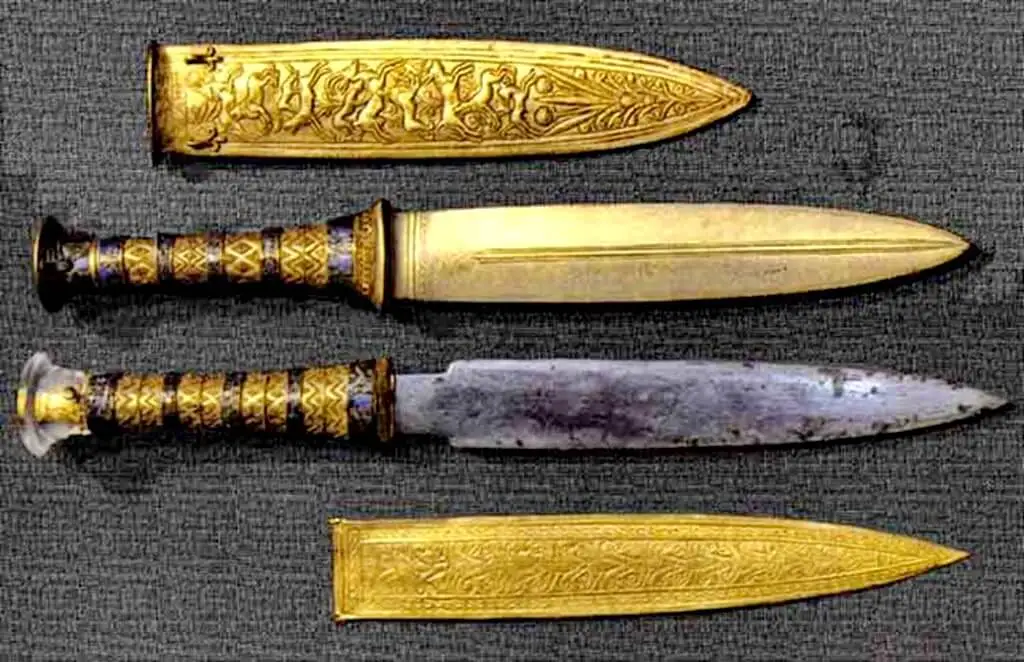
Tutankhamun’s tomb contained two daggers. One had a gold blade, indicating its ceremonial purpose. The other, however, featured an iron blade. The iron dagger is particularly remarkable because iron was a rare and precious metal in ancient Egypt at that time. Scientists believe craftsmen crafted it from a meteorite, suggesting a “gift from the gods.” Both daggers showed signs of wear, suggesting Tutankhamun used them during his lifetime, and they were not solely ceremonial. The meteorite dagger highlights the advanced knowledge and unique materials available to the pharaohs.
Statues of Anubis

The jackal-headed god Anubis presided over mummification and the afterlife. Significantly, archaeologists found a gilded wooden statue of Anubis, sitting in the form of a jackal, within the tomb. This statue likely served as a guardian of the burial chamber. Consequently, its presence emphasized the importance of a successful journey through the underworld.
Shabti Statues of King Tutankhamun
In addition to Anubis, over 400 small shabti statues were found in the tomb. These figures were believed to serve the deceased in the afterlife, performing tasks for the pharaoh. Specifically, each shabti held a miniature hoe and a basket, ready to work on behalf of the king. Their sheer number, furthermore, underscores the belief that the afterlife involved continued activity and that the pharaoh deserved a vast workforce.
Game Boards (Senet)
The tomb contained four sets of the board game senet. Ancient Egyptians played this game, and some historians believe it represented a game played against the god of death, where eternal life was at stake. Craftsmen made the boards from wood, then covered them in ebony and ivory. People thought playing Senet in the afterlife symbolized the soul’s passage through the underworld.
Trumpets
Archaeologists found two trumpets – one silver, one gilded bronze. These rank among the oldest surviving labrosones (instruments played with lip vibrations) in the world. People used them not just as musical instruments, but also likely in religious ceremonies or to rally troops. People believed one trumpet possessed magical powers. Someone reportedly sounded it just before World War II.
Boomerangs and Throwing Sticks
Several boomerangs and throwing sticks were among the burial items. These were likely intended for hunting in the afterlife, a common pastime for pharaohs. Their presence signifies the continuation of earthly pleasures and activities in the next world.
Golden Sandals and Gloves of Tutankhamun
Tutankhamun’s burial included golden sandals. Craftsmen adorned these with depictions of Egypt’s traditional enemies on the soles. This symbolized their defeat and the pharaoh’s dominance. He also had gloves, some with gold and silver finger coverings. These reflect the luxury and attention to detail they gave his burial.
Ceremonial Objects of King Tutankhamun
The tomb contained a crook and flail, symbols of pharaonic authority and kingship. The crook represented the king as a shepherd of his people, while the flail symbolized his disciplinary power. Many other ceremonial objects, like breastplates with scarab amulets (symbolizing rebirth), were also present. These objects were essential for the king to perform his duties in the afterlife and maintain his divine status.
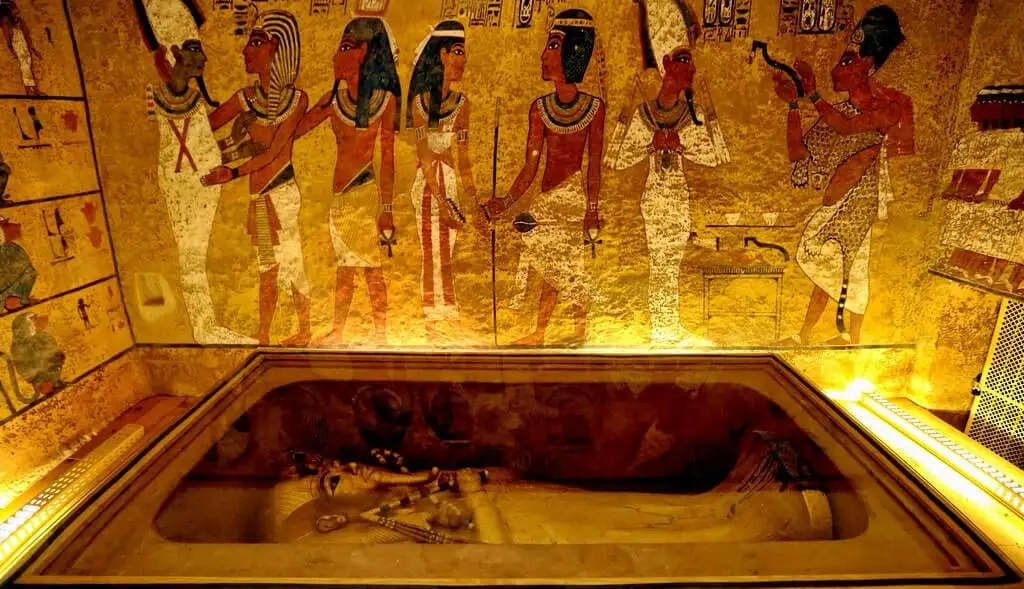
These are just a few examples of the thousands of items archaeologists recovered from Tutankhamun’s tomb. Each artifact significantly contributes to our understanding of this young pharaoh and ancient Egypt’s rich culture. The Grand Egyptian Museum in Giza now houses most of these treasures, offering a magnificent display of ancient Egyptian artistry and belief. Tutankhamun’s mummy and sarcophagus, however, remain in his original tomb in the Valley of the Kings.
If you are visiting Egypt, go see our Egypt Tour Packages, and do not forget to check Egypt’s weather before you go.
